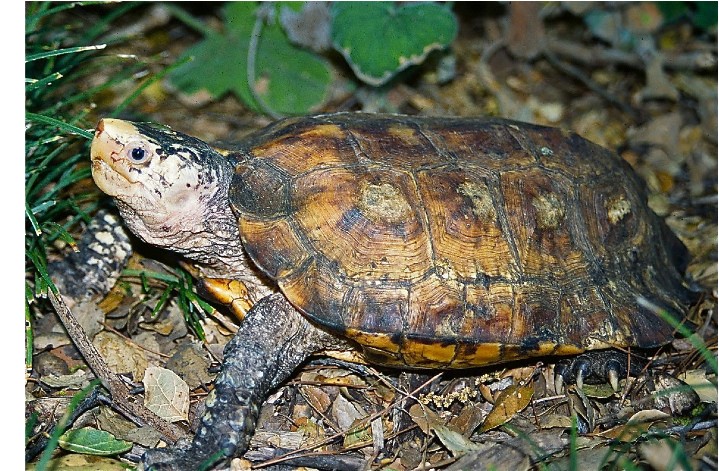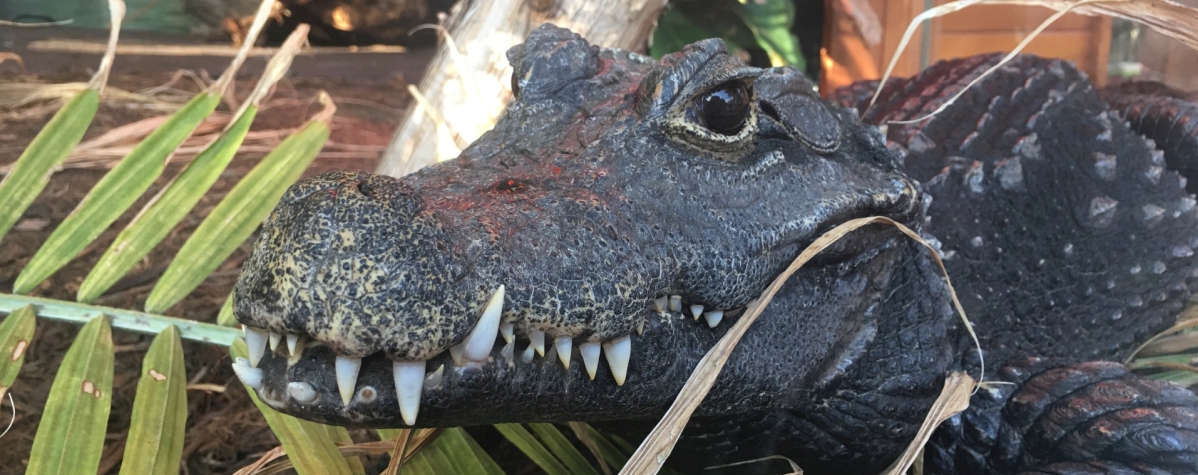Sulawesi Forest Turtle
Scientific Classification 
| Species | Leucocephalon yuwonoi |
| Kingdom | Animalia |
| Phylum | Chordata |
| Class | Reptilia |
| Order | Testudines |
| Family | Geoemydidae |
| IUCN Status | Critically endangered |
Appearance and lifespan
Sulawesi forest turtles measure up to 24 to 28 cm (9.4 to 11 in) with males typically larger than females. Another distinction between males and females is the coloration of their heads; males have a white-yellow head while females have a brown head making them sexually dimorphic. In Latin, the word Leucocephalon translates to “white head”.
Behavior and reproduction
Little is known about Sulawesi Forest Turtle behaviour and reproduction since they are rare in captivity and numbers in the wild are so low. Females only lay 1 to 2 eggs in each clutch adding to the difficulty of propagation of this endangered species.
Ecology and conservation
The Sulawesi forest turtle is a medium sized freshwater turtle species that inhabits the large Indonesian island of Sulawesi. This species of turtle lives within the mountains of Sulawesi. Young turtles spend most of their juvenile life in the water while adults spend time in both streams and forest foliage.
The Sulawesi forest turtle was recently discovered in 1995, and little is known about their ecological or reproductive behaviour. In 1998 there was an estimated 2000-3000 Sulawesi turtles in the wild. In 1999 this number decreased to 100. Currently IUCN red listed this species as critically endangered.
Food at the Zoo
At the Riverview Park and Zoo, the Sulawesi turtles are fed a fruit mixture containing melons, strawberry, kiwi, peach, plum grapes, mushroom, papaya, mango, banana and other fruits, and a lettuce mixture containing kale and romaine lettuce as well as dandelion, weeds, smelt and commercial turtle pellets.
Threats
The major threat to the Sulawesi forest turtle is illegal exportation for the pet trade, exploitation for the food markets and an extremely low reproductive rate.
Did you know?
Riverview Park & Zoo has had six successful hatchlings, one each in 2014, 2016 and 2020, and three in 2021! We are proud to be the only Canadian institution and one of only a handful of institutions in North America to be breeding these rare chelonians. In 2017 we were awarded the colonel G.C. Dailley Conservation award for our efforts at CAZA’s national conference in Ottawa.


